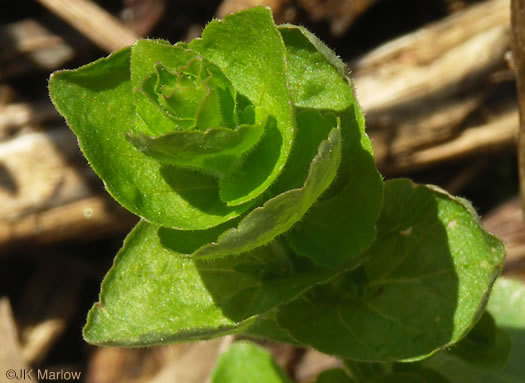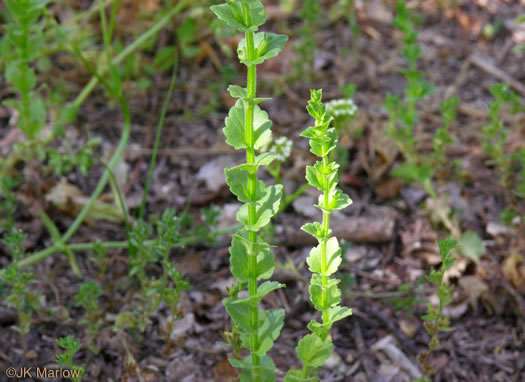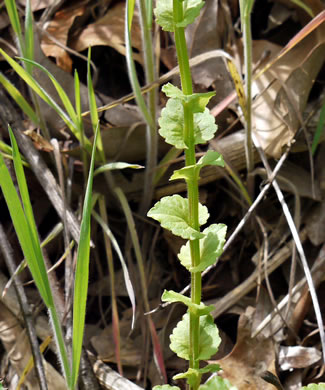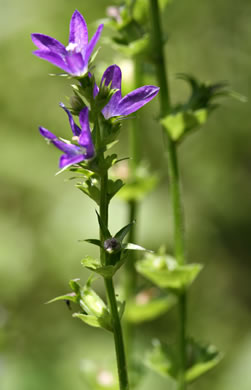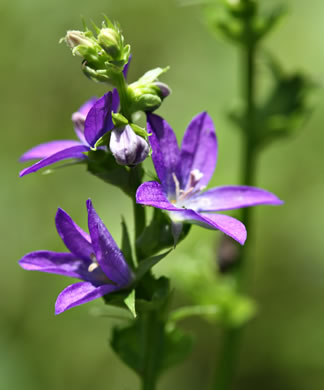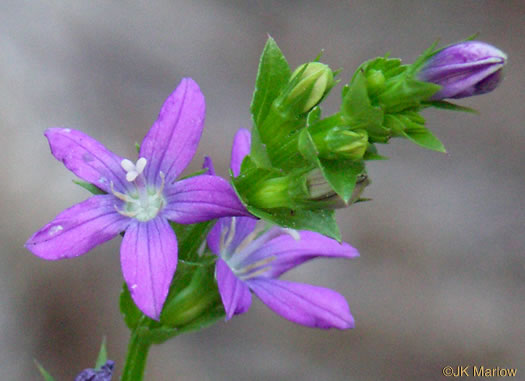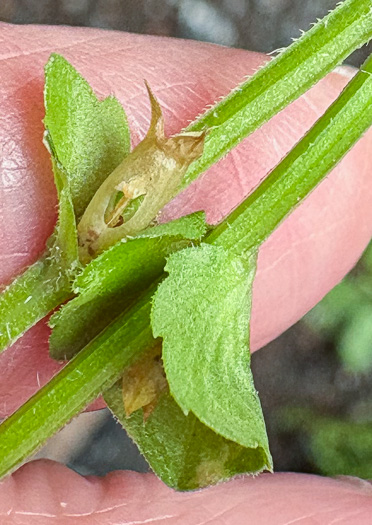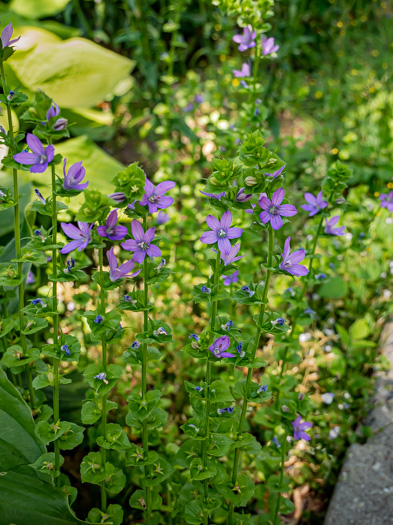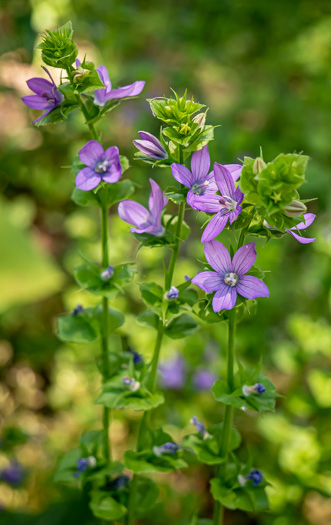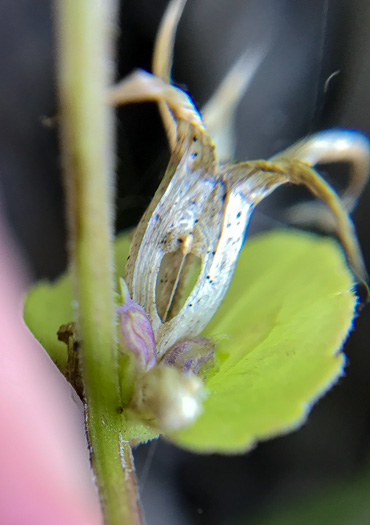Spermatophytes (seed plants): Angiosperms (flowering plants): Eudicots: Core Eudicots: Asterids: Campanulids: Asterales
WEAKLEY'S FLORA OF THE SOUTHEASTERN US (4/24/22):
Triodanis perfoliata
FAMILY
Campanulaceae
Go to FSUS key
Dig deeper at SERNEC, a consortium of southeastern herbaria.
Read more about Clasping Venus's Looking-glass at Vascular Plants of North Carolina.
SYNONYMOUS WITH
PLANTS NATIONAL DATABASE:
Triodanis perfoliata
FAMILY
Campanulaceae
SYNONYMOUS WITH Floristic Synthesis of North America. BONAP (Kartesz, 2021)
Triodanis perfoliata ssp. perfoliata
SYNONYMOUS WITH Guide to the Vascular Plants of the Blue Ridge (Wofford, 1989)
Triodanis perfoliata var. perfoliata
SYNONYMOUS WITH VASCULAR FLORA OF THE CAROLINAS (Radford, Ahles, & Bell, 1968) 178-01-001:
Specularia perfoliata FAMILY Campanulaceae
COMMON NAME:
Clasping Venus's Looking-glass
To see larger pictures, click or hover over the thumbnails.
JK Marlow jkm070429_012
April Greenville County SC
An unbranched plant with an angled stem, per Wildflowers of the Southern Mountains (Smith, 1998).
JK Marlow jkm120406_600
April Greenville County SC
Swamp Rabbit Trail
Clasping or sessile leaves less than 1" long and about as wide, per Wildflowers of the Southern Mountains (Smith, 1998).
Gill Newberry gn05_s_perfoliata_triodan
May
Sepals lanceolate, acute to acuminate. Bracteal lvs about as wide as long, per Vascular Flora of the Carolinas (Radford, Ahles, & Bell, 1968).
JK Marlow jkm060528_062b
May Greenville County SC
Tall Pines Wildlife Management Area
Chasmogamous flowers borne on the upper half of the stem, per Vascular Flora of the Carolinas (Radford, Ahles, & Bell, 1968).
JK Marlow jkm230706_4349
July Pickens County SC
Glassy Mountain Heritage Preserve
Each capsule's seeds are dispersed thru roundish pores with coiled "doors", per Wildflowers of Tennessee, the Ohio Valley, and the Southern Appalachians (Horn, Cathcart, Hemmerly, & Duhl, 2005).
WEAKLEY'S FLORA OF THE SOUTHEASTERN US (4/24/22):
Triodanis perfoliata
FAMILY
Campanulaceae
SYNONYMOUS WITH
PLANTS NATIONAL DATABASE:
Triodanis perfoliata
FAMILY
Campanulaceae
SYNONYMOUS WITH
Floristic Synthesis of North America. BONAP (Kartesz, 2021)
Triodanis perfoliata ssp. perfoliata
SYNONYMOUS WITH
Guide to the Vascular Plants of the Blue Ridge (Wofford, 1989)
Triodanis perfoliata var. perfoliata
SYNONYMOUS WITH
VASCULAR FLORA OF THE CAROLINAS (Radford, Ahles, & Bell, 1968) 178-01-001:
Specularia perfoliata
FAMILY
Campanulaceae
If a search such as "Carex leptalea var. leptalea" doesn't deliver the results you want, try "Carex leptalea".
Or, to minimize chances of a misspelling, try just "Carex le".
Less is more: If "pencil flower" doesn't deliver the results you want, try "pencil".

